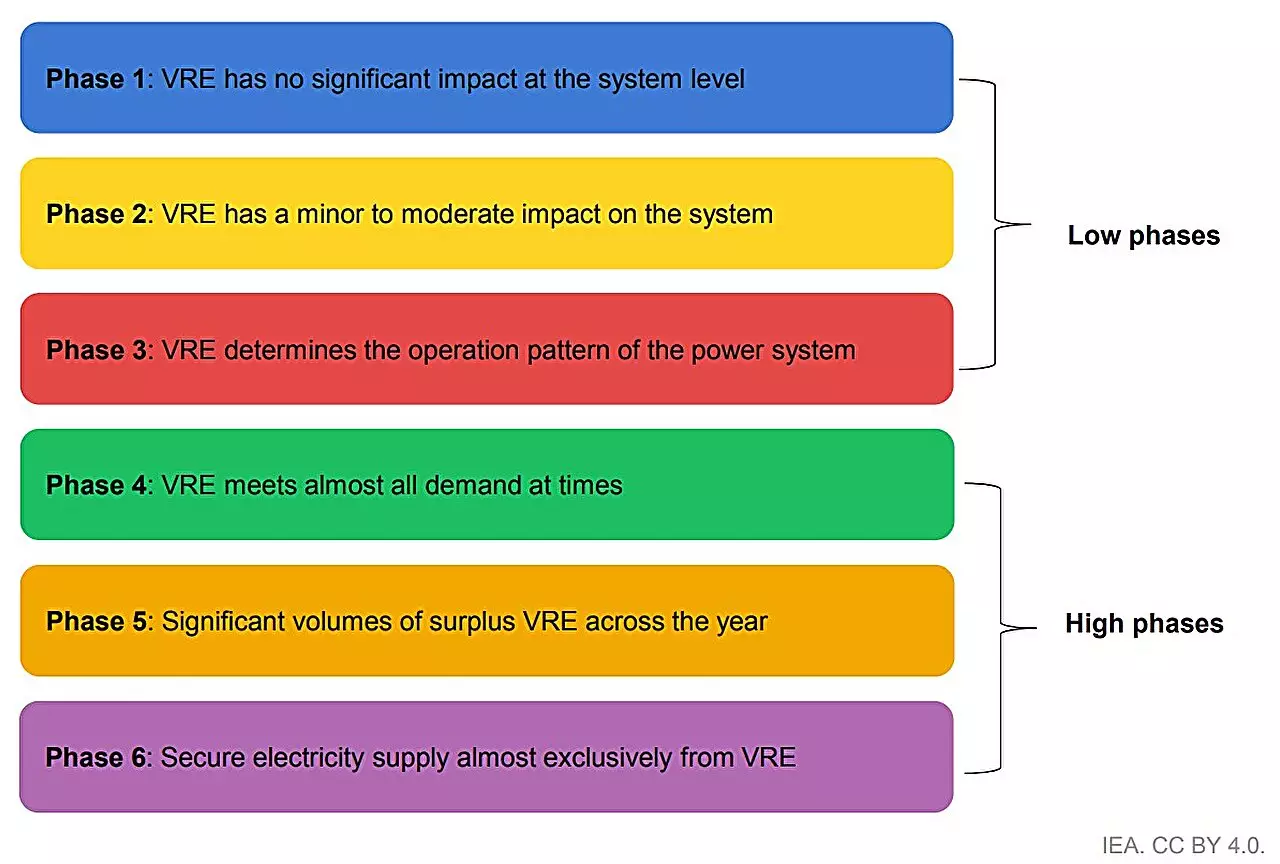The global shift towards renewable energy sources, particularly solar photovoltaic (PV) and wind power, is taking place at an unprecedented rate. The International Energy Agency (IEA) recently highlighted that between 2018 and 2023, the capacity for these forms of clean energy doubled globally. This surge is not just a statistic; it underscores a fundamental transformation in how countries approach energy security and emissions reduction. Acknowledging the critical role these technologies play in achieving net-zero targets by mid-century is essential. As solar and wind contribute significantly to cutting carbon dioxide emissions, their integration into existing power systems is crucial for maximizing their potential benefits.
The Need for Integration: A Pivotal Challenge
Despite the rapid growth in solar and wind capacity, integration into power systems presents significant challenges. The recent IEA report warns that failure to integrate these variable renewable energy (VRE) sources effectively might result in a 15% decrease in their electricity generation by 2030. This consequence could impede the global transition towards cleaner energy and lead to missed opportunities for enhanced energy security and environmental benefits.
The report emphasizes that, while the journey towards increased VRE usage is promising, the road is fraught with hurdles that must be navigated through timely and strategic policy interventions. As energy systems around the world evolve, decision-makers must take proactive measures to incorporate these intermittent energy sources into the grid.
The report also sheds light on strategies from frontrunner countries such as Denmark, Spain, and South Australia that have shown remarkable success in integrating VRE into their power systems. Their experiences provide valuable insights for those nations currently lagging in renewable energy adoption. One of the key takeaways is that integrating solar and wind does not necessarily require sweeping overhauls of the existing energy structure. Countries with low shares of renewable energy can enhance deployment through gradual improvements, such as optimizing the flexibility of current assets and refining energy forecasting methods.
Moreover, the report underscores the importance of technological advancements in energy storage and grid management. These innovations are essential for handling the variability that characterizes solar and wind energy output. As a result, developing efficient storage solutions and smart grid technologies is becoming increasingly important to ensure a reliable and stable energy supply.
A Call to Action: The Role of Policy and Regulation
The role of effective policy and regulatory frameworks cannot be overstated. The report indicates that most technological solutions to the challenges posed by high levels of VRE penetration are either mature or approaching maturity. However, the successful implementation of these technologies often hinges on appropriate regulation and support measures rather than solely on new technological inventions. Policymakers must thus prioritize systematic planning and proactive regulations as they foster the growth of renewable energy in their respective countries.
Investing in policies that promote flexibility in the energy system, facilitate the development of storage capabilities, and encourage the usage of advanced forecasting techniques can create an environment conducive to integrating higher levels of VRE. The integration process should focus not only on immediate gains but also on long-term sustainability and reliability.
As the world aims for a significant increase in the share of renewable energy in the electricity mix, it is imperative that countries embrace the changes necessary for effective integration. The potential benefits of solar PV and wind can only be realized through thoughtful planning and innovation in energy systems. By learning from frontrunner nations and investing in policies that prioritize integration, governments can ensure a smooth transition to a more sustainable and secure energy future. The call to action is clear: immediate and decisive efforts are necessary to harness the power of renewables and maximize their contribution to a cleaner planet. The pathway towards achieving net-zero emissions by mid-century depends fundamentally on our ability to integrate these renewable sources effectively into our global energy infrastructure.


Leave a Reply